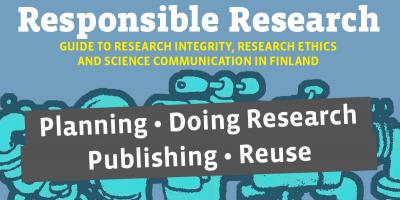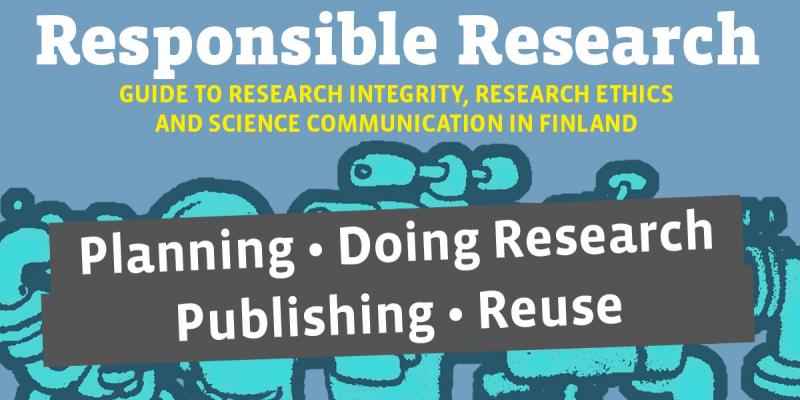In peer review of scholarly manuscripts, authors, editors, and expert reviewers share responsibility for the success of the process.
There are three parties to peer review of scholarly manuscripts, who share responsibility for the success of the process.
In a peer-reviewed journal, the process begins when the researcher submits a manuscript to the journal in order to have it published in a reliable, prominent channel. The editor-in-chief examines the suitability of the manuscript for the journal, and either rejects the text or sends it out for review to a minimum of two external experts, called reviewers or referees, for advice and feedback.
Each reviewer writes comments on the manuscript suggesting amendments and justifying the need for them. Ideally the criticism is constructive and arrives on time, and the author receives guidance on alternative solutions and additional information.
An ideal editor will make a considered decision based on the comments and his or her own judgment, and justify this decision to the author. If the editor wants to receive a revised text, s/he advises the author and responds to the author’s questions. The editor hopes that the author will respond to the feedback promptly and improve the manuscript. The author writes a brief report on the proposed changes made which makes it easier to assess them.
A manuscript accepted for publication then goes through the publication channel’s own editing process, in which language and copyright issues are checked. A copy editor carries out this work meticulously and the author learns from this feedback, too.
Reality is often quite different. It is therefore a good idea to cast a critical eye over one’s own part in the process.
A responsible author plans ahead
The author of a research article needs to understand that submitting a manuscript to a journal means approving the journal’s peer review process and good academic conduct. Therefore, it is the author’s responsibility to find out in advance whether, for example, the number of peer reviewers used by the journal matches his or her needs and preferences.
The author should also finalise the manuscript so that the referees can concentrate on adding depth to the topic itself. This requirement includes clear argumentation, a logical structure, and compliance with the journal’s instructions for authors.
The author may sometimes suggest (or object to) potential peer reviewers who could help the journal’s editorial team in the review process. This, however, is not an invitation to blacklist competitors or get one’s own collaboration partners in among the reviewers. The author must also accept that the content of the comments, or the decision based on them, may come as a disappointment.
The author must also accept that the content of the comments, or the decision based on them, may come as a disappointment.
The author acts fairly by keeping to the agreed schedule and informing the editors of any delays. The summary the author provides of proposed changes made must match what has actually been done to the manuscript.
An expert understands the assignment
A good referee has a realistic conception of his or her own expertise, schedules, and ethical qualification for the task. This helps in deciding quickly on how to respond to a journal’s invitation to review.
The ideal answer is yes, if the person receiving the invitation knows the subject area of the manuscript but not the author and there are no conflicts of interest. In accepting the invitation, the reviewer confirms acceptance of the journal’s practices, for example regarding anonymity of the parties and confidentiality of the process. The reviewer also promises to read the instructions accompanying the manuscript, present the criticism constructively in the form requested and keep to the schedule.
A responsible reviewer will contact the journal’s editor immediately in the event of any questions or unexpected surprises. S/he is honest, impartial, and does not mislead the editor in the comments provided, for example to delay the publication of a competitor’s findings or to damage a competitor’s reputation. If the assignment does not fit in one’s schedule, it should be turned down.
Writing proper comments by the deadline is desirable reciprocity, especially if the expert has used the journal’s editorial services and expert networks as an author.
Editor-in-chief as policy maker
The highest authority in the process is the editor-in-chief. The editor-in-chief’s task is to ensure that the journal’s policy is clear, public and the same for everyone. Ideally, the policy guidelines are carefully considered and executed in practice.
A responsible editor-in-chief ensures consistency by anticipating problems. S/he determines who is suitable as a peer reviewer, how many reviewers are invited, whether reviewer comments can be rejected or edited, and how the work is scheduled. What if maintaining the anonymity chosen as being fundamental to the review process turns out to be impossible? In this reasoning, the editor-in-chief demonstrates his or her familiarity with discipline-specific and international practices and ideals.
A responsible editorial team is committed to its work and follows both discipline-specific developments and changes in publishing. Managing a journal’s publishing policy, finances, recruitment, quality control, technical production process and publisher relationships requires expertise that research scholars seldom have, no matter how long or international their lists of publications might be. This means that moving from a researcher to an editor role and succeeding in this new job require determined and ongoing commitment to training.
A responsible editor-in-chief hones his or her negotiating and communication skills so that matters progress, information flows and people are treated well. This makes it easier to wait for decisions and to accept them. At their best, the same procedures refresh established practices and allegiances, and foster impartiality in small circles.
Succeeding is worthwhile
A commitment to responsible peer review is a rewarding investment in the future of research. Ethically sustainable practices elevate the quality of the work and the reputation of its authors, and are inclined to attract competent authors, reviewers and editors to the journal.
The benefits are reaped by the scholarly community and society, which relies on the findings of science.
The journal’s publisher and academic discipline with its networks also benefit from reliable findings and its exemplary reputation. Ultimately, the benefits are reaped by the scholarly community and society, which relies on the findings of science.
Pauliina Raento, Professor of Regional Studies, University of Tampere
Further information:
Committee on Publication Ethics COPE (2017). https://publicationethics.org/
Elden, Stuart (2008). Editorial: The exchange economy of peer review. Environment and Planning D: Society and Space 26, 951–953.
Raento, Pauliina (2007). Kelpo raportoinnin strategia [Strategic reporting of research]. In: Markus Laine, Jarkko Bamberg & Pekka Jokinen (eds.): Tapaustutkimuksen taito [The Art of Case-Based Research], 258–278. Gaudeamus Helsinki University Press, Helsinki.
You might also be interested in
Tämä teos on lisensoitu Creative Commons Nimeä 4.0 Kansainvälinen -lisenssillä. Detta verk är licensierat under en Creative Commons Erkännande 4.0 Licens. This work is licensed under a Creative Commons Attribution 4.0 International license.

